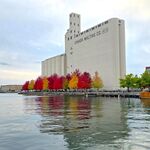CapitalSeven
Senior Member
TTC's plan has always been to build Eglinton as low-floor. It may be that Metrolinx has other ideas; they've mused about combining the line with the Scarborough RT using the "Mark II" version of that technology. A compromise would be to join the two lines as LRT using high-floor vehicles. I think the SRT has a 30" floor, which you could just get away with on high-floor cars, and could be used in a street-level system, though you'd need serious ramps at the stations. I'm not saying I think that's either likely or a good idea, but it's feasible and would lower the cost of rebuilding the SRT.
As for conversion, building the Eglinton line to heavy rail standards mostly means the dimensions, geometry, and grade of the tunnels, and convertability of the stations. If they're built with conversion in mind, it could eventually be done quickly and with minimal shutdowns. But several people (yes, including Steve Munro of course) have pointed out that if you plan and build a low-floor LRT system wisely, you can increase the length of the stations, change the vehichle type and signalling system, and add ATC, and you are up in the realm of heavy-rail capacities without having to convert.
This is essentially what Ottawa is doing with the Transitway conversion. While the tunnels will be built as heavy-rail compatible, the stations will be 600 feet long, even though only 400-foot trains will be needed in the medium term. A system with 600-foot LRT trains will have the same capacity as the TTC heavy-rail subways, beyond which Ottawa won't need to go for decades. Yet the trains will still be able to use the existing bus stations with varying (in some cases minimal) degrees of modification, and very simple stations will be possible on the outer fringes of the extensions.
As for conversion, building the Eglinton line to heavy rail standards mostly means the dimensions, geometry, and grade of the tunnels, and convertability of the stations. If they're built with conversion in mind, it could eventually be done quickly and with minimal shutdowns. But several people (yes, including Steve Munro of course) have pointed out that if you plan and build a low-floor LRT system wisely, you can increase the length of the stations, change the vehichle type and signalling system, and add ATC, and you are up in the realm of heavy-rail capacities without having to convert.
This is essentially what Ottawa is doing with the Transitway conversion. While the tunnels will be built as heavy-rail compatible, the stations will be 600 feet long, even though only 400-foot trains will be needed in the medium term. A system with 600-foot LRT trains will have the same capacity as the TTC heavy-rail subways, beyond which Ottawa won't need to go for decades. Yet the trains will still be able to use the existing bus stations with varying (in some cases minimal) degrees of modification, and very simple stations will be possible on the outer fringes of the extensions.
Last edited:










